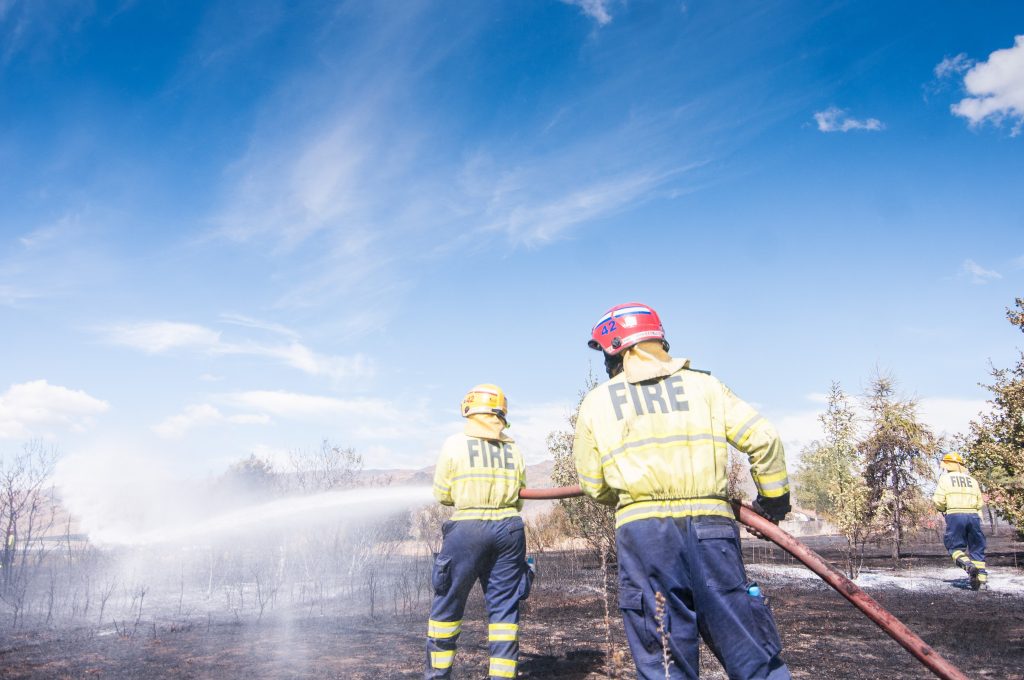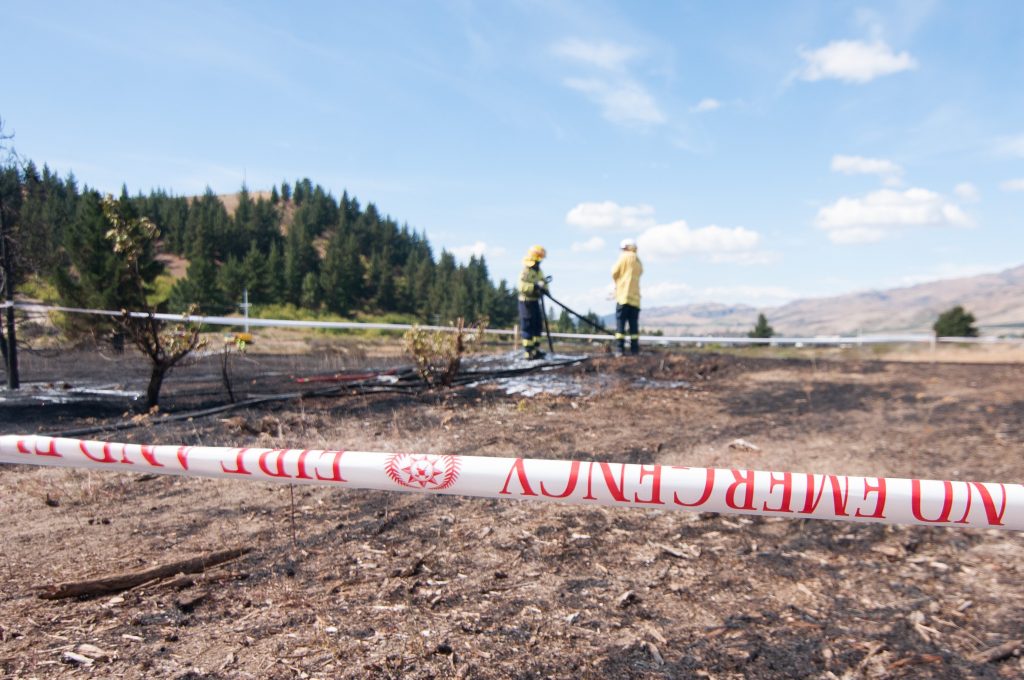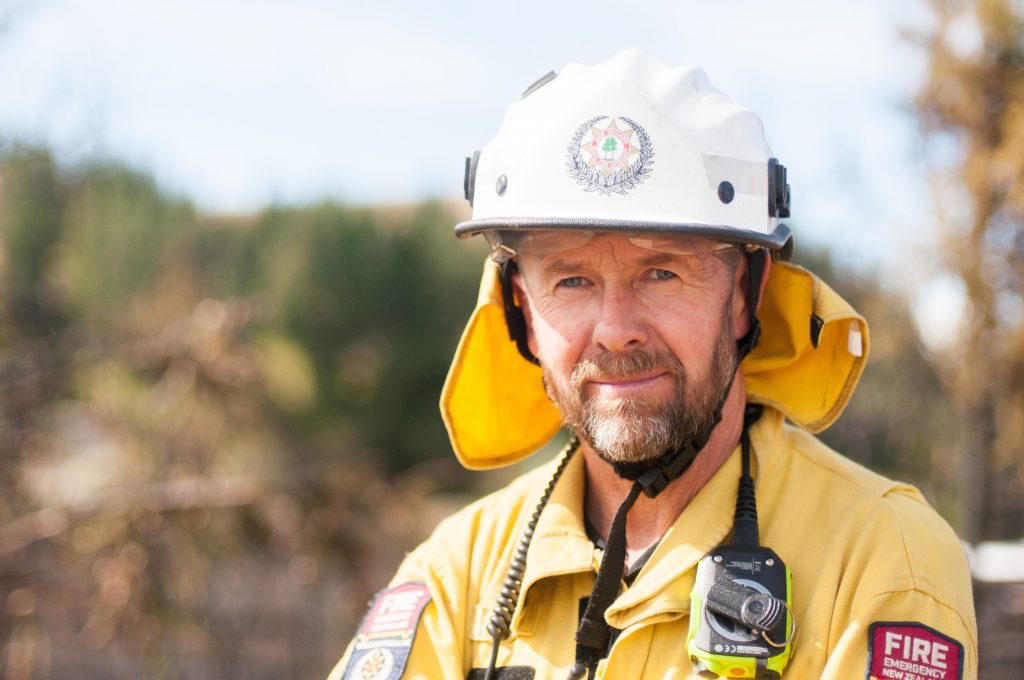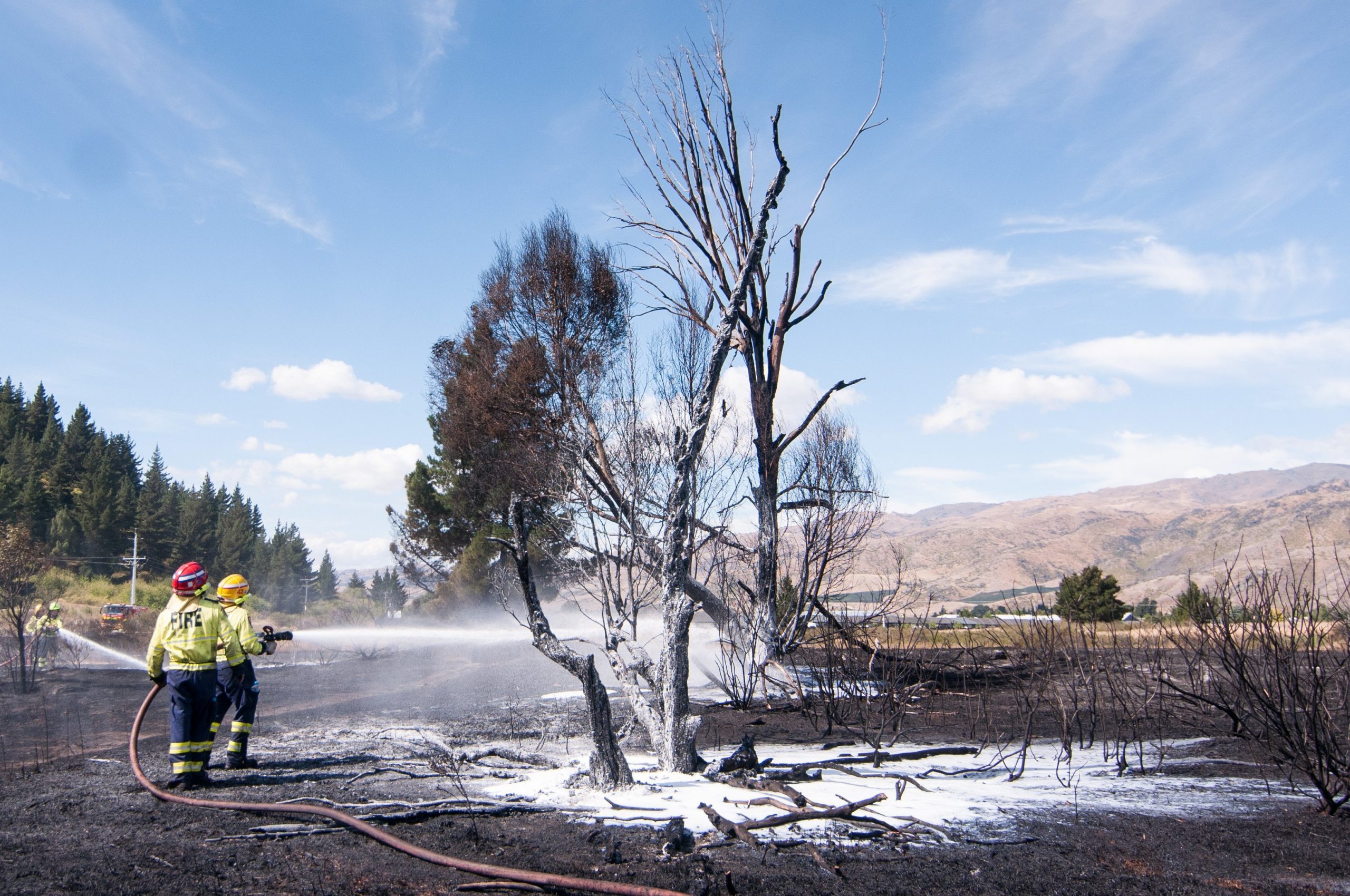Despite rain the past two days, Niwa warns the region is not ‘‘out of the woods’’ yet and authorities are urging caution as tinder dry conditions continue to pose a major fire risk.
A significant fire last week, fewer than normal firefighters and the prospect of more dry weather has Fire and Emergency New Zealand (Fenz) staff sounding the alarm.
Fenz Assistant Area Commander Mark Mawhinney said conditions are approaching those similar to 1999, when large wildfires now known as ‘‘the Alexandra fires‘‘ broke out.

On Friday, Cromwell residents grabbed hoses and buckets to tackle a major blaze that burnt 2.5ha in a few minutes.
‘‘We can’t afford to have a major event down here and that’s easily what this could have been,’’ AAC Mawhinney said.
The scrub fire near the intersection on Kawarau Gorge Rd (State Highway 6) and State Highway 8B came within metres of people’s properties. It could have been much worse if not for the quick actions of residents and the volunteer fire brigades.
AAC Mawhinney said it was fortunate winds had remained low on Friday.
With firefighters deployed to the North Island to assist with the fallout from Cyclone Gabrielle, Otago could not risk a significant fire, he said.
‘‘We need the public to be aware of just how dry it is and how easy it is to start fires. ‘‘People need to understand we are in an exceptionally dry period.’’

A hot dry summer was not unusual for Central Otago, but drier weather than in previous years was forecast for the region in coming weeks, a Fenz spokesperson said. ‘‘We cannot predict with accuracy when the fire risk will lower again this year.
‘‘While rain is forecast this may not be enough to ease current fire danger levels.’’
In the event of fire that required residents to evacuate, Civil Defence would support Fenz by opening an evacuation centre.
‘‘People were encouraged to make use of the app, Otago Gets Ready, to receive emergency alerts and information.
Niwa’s annual climate summary revealed last year was the warmest on record.
While much of the country received above or well above normal rainfall, Otago had received below average rainfall.
Rain forecast for this week brings another danger.

Central Otago/Upper Clutha Civil Defence emergency manager Jacqui Lambeth said rain on the hard, dry ground may lead to flooding.
Federated Farmers Otago provincial president Mark Patterson said conditions were the driest many farmers had seen.
‘‘We are going into our third exceedingly dry autumn in a row,’’ Mr Patterson said.
‘‘This dry started earlier, we have had no widespread rain since pre-Christmas.’’
The dry conditions had spread further, with large parts of Otago affected. The dry weather contributed to a lack of quality feed and earlier use of supplementary feed.
He said this caused added pressure for farmers who were dealing with increases in farm costs at the same time as depressed product prices.
A water shortage direction might be needed if dry conditions continued, Otago Regional Council acting general manager regulatory Joanna Gilroy said.
‘‘If this became necessary, this measure would be forecast and communicated ahead of time so landowners can prepare,’’ Ms Gilroy said.
Mayor Tim Cadogan said he was worried about conditions.
‘‘The current dry conditions are a concern both for primary producers and for the increasing fire danger.’’
There were 15 volunteer fire and emergency brigades across Central Otago and Upper Clutha, Fenz Otago group manager Bobby Lamont said.
Six large water tankers were located throughout the districts. While rural brigades had excellent local knowledge of where water supplies were, the large tankers were essential to get water to a fire as quickly as possible, he said.
Any open water source, such as dams, creeks and swimming pools could be used for fire fighting.
Access could be a problem in high country areas, so helicopters were used when necessary, Mr Lamont said.
There were high levels of flammable vegetation in rural areas at the moment as the wet spring and summer had encouraged a lot of growth, Mr Lamont said.
‘‘This means any fires started will be extremely difficult to control and extinguish.’’
Residents should avoid any activities that could cause sparks, a Fenz spokesperson said last week.
‘‘Activities such as using lawnmowers, weed eaters, angle grinders and chainsaws, where there is a likelihood of steel creating sparks from contact with stones or other hard surfaces, can lead to unwanted fires. Using vehicles in long dead grass, particularly quad bikes and motorbikes, can also cause this.
‘‘If you can, delay these activities until we have had rain.
‘‘If it’s essential work, only carry out these activities early in the morning when there are cooler temperatures and no wind.’’
The spokesperson also urged people to have the ability to put out a fire if they start one.
‘‘Water under high pressure is best such as a garden hose and or a 9kg water or foam fire extinguisher.
‘‘For some activities, wetting down the surrounding area before you undertake your activity is a good idea.’’
People are advised to use the Check It’s Alright website (checkitsalright.nz), to follow the fire safety advice and to check the local fire danger level.





